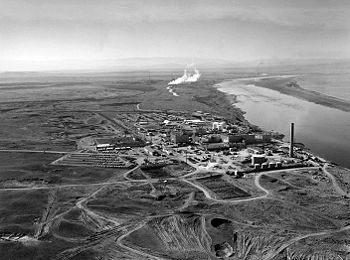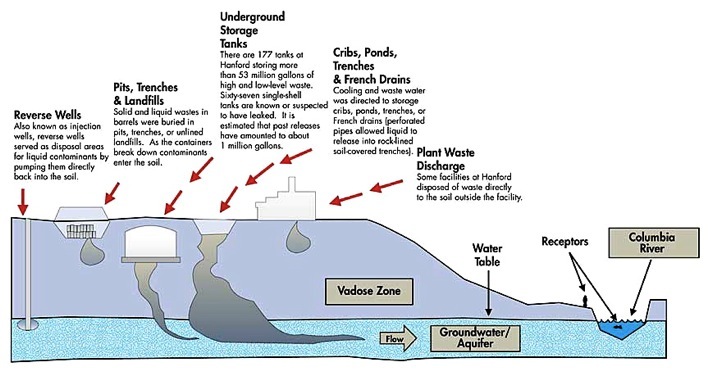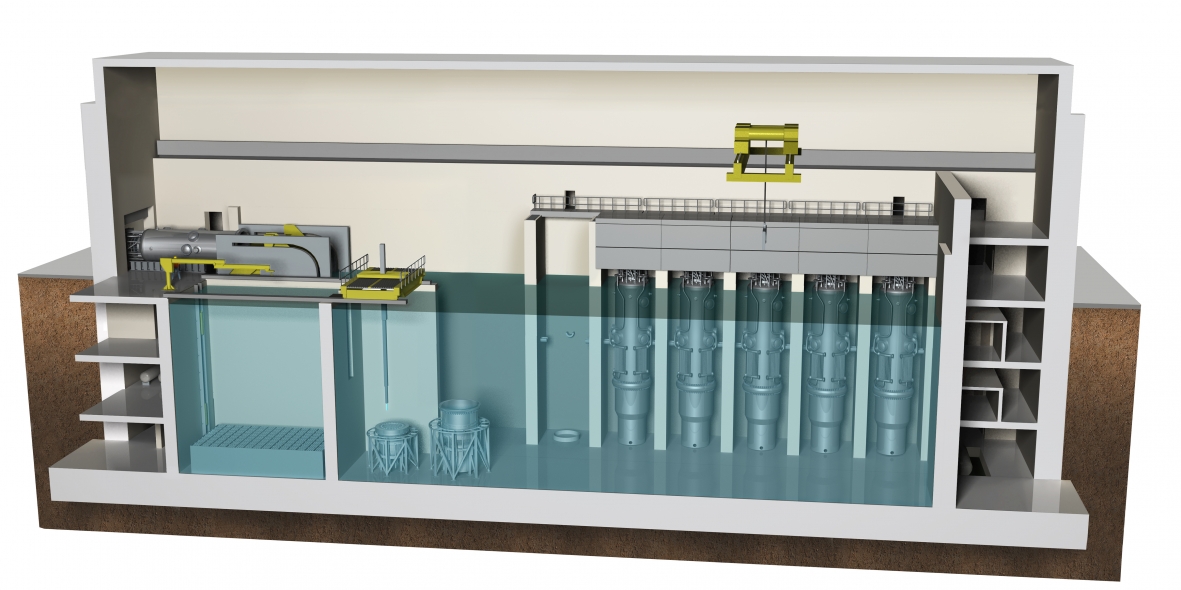
feature 1

myvalleysun.com
News and Ideas About Life and Living in the Okanagan
Small Nukes
“Small modular reactors represent a new generation of safe, reliable, low-carbon nuclear energy technology and provide a strong opportunity for America to lead this emerging global industry,” said Energy Secretary Ernest Moniz. “The Energy Department is committed to strengthening nuclear energy’s continuing important role in America’s low carbon future, and new technologies like small modular reactors will help ensure our continued leadership in the safe, secure and efficient use of nuclear power worldwide.”
This project represents a significant investment in first-of-its-kind engineering and design certification for small modular reactors in the United States. Through a five-year cost-share agreement, the Energy Department will invest up to half of the total project cost, with the project’s industry partners matching this investment by at least one-to-one. The specific total will be negotiated between the Energy Department and NuScale and will be derived from the total $452 million identified for the Department’s Small Modular Reactor Licensing Technical Support program.
The Energy Department investment will help NuScale obtain Nuclear Regulatory Commission design certification and achieve commercial operation around 2025, while providing innovative and effective solutions for enhanced reactor safety, operations and performance. The Energy Department’s cooperative agreements require that the reactors be built domestically – strengthening American manufacturing capabilities and creating important export opportunities for the United States. The project will be based in Oregon and will support additional suppliers and operations in California, Idaho, Washington, Pennsylvania, South Carolina, Virginia, Kansas, Texas and Maryland.
The Neighborhood Nuke Market
Small nuclear reactors will democratize nuclear energy and this does not seem to be gathering much interest with decision makers. SMR’s will allow utilities to provide an energy solution in remote areas and into developing countries; it will allow for companies to do the same; and even cities, neighborhoods and individuals.
We need to ask certain questions in advance of SMR’s being introduced because they will evolve within the marketplace:
- “Would terrorist or paramilitary organizations like to have access to their own SMR?”
- “What might a brilliant high school student create if they had an small SMR in their backyard?”
- “Where would the fuel come from, and how would it be shipped – and how might it be refueled every two years – and what if its not?”
- “Where does the nuclear waste go?”
- “Who monitors the SMR and how does it get decommissioned if need be?”
These questions represent the tip of the nuclear iceberg. The NuScale reactors are similar to the small reactors that operate on U.S. Navy ships. The SMR’s are prefab reactors with parts being manufactured in one location, and then transported to the reactor site for final assembly. A modular segment would be a mini-reactor of 50 to 300 megawatts. In Washington, Energy Northwest’s Columbia Generating Station, a nuclear plant, produces more than 1,190 megawatts of electricity, equal to about a tenth of the state’s energy needs. Small modular reactors are supposed to be designed so extra modules can be added as needed — with 12 modules being the theoretical maximum.
So if twelve 300 megawatt modules were assembled into a single unit then that might translate into 3600 megawatt nuclear facility or well over twice the size of the Columbia Generating Station.
Each NuScale reactor vessel is expected to be 9 feet by 65 feet and weigh 650 tons (590 metric tons). The modules would be delivered by railcar, barge or special trucks and assembled on-site. They require refueling with standard 4.95 percent enriched Uranium-235 fuel every two years, at this point it is uncertain where that fuel would be stored and how it would be transported.
NuScale's design does not rely on powered water pumps or circulatory equipment. The company claims it can shut down and continue cooling itself indefinitely in the event of a catastrophe. The devices are intended to be kept in a below-ground pool, to absorb the shock of earthquakes, with a concrete lid over the pool. In the event that AC power is lost for normal cooling systems, the pool water begins to absorb heat and boil.
NuScale is expected to be the first SMR to market, because its cooling is similar to the systems used in conventional power plants. However once approved, alternative cooling systems using molten metals are expected to operate at higher, more efficient temperatures. The company estimates a twelve-unit NuScale plant would cost $5,000 per kilowatt. In comparison, the Energy Information Administration in 2011 estimated costs to be $4,700 per kilowatt for conventional nuclear power; $4,600 for a carbon sequestration coal plant and $931 at a gas-fired plant or in excess of $1,800 for a gas-fired plant with carbon sequestration. David Mohre, executive director of NRECA's Energy and Power Division, said SMR's like NuScale's are ideal for rural towns that need small power plants and do not have access to natural gas. NuScale power plants are also expected to take less time, materials and space to construct than other power sources and can be expanded incrementally to meet changing power needs.
Both the company and the US Energy Department suggest that SMRs can provide power for applications where large plants are not needed or sites lack the infrastructure to support a large unit. This would include smaller electrical markets, isolated areas, smaller grids, sites with limited water and acreage, or unique industrial applications. SMRs are expected to be attractive options for the replacement or repowering of aging fossil plants, or to provide an option for complementing existing industrial processes or power plants with an energy source that does not emit greenhouse gases.
NuScale claims that SMR’s will also provide safety and potential nonproliferation benefits to the United States and the wider international community. Most SMRs will be built below grade for safety and security enhancements, addressing vulnerabilities to both sabotage and natural phenomena hazard scenarios. Some SMRs will be designed to operate for extended periods without refueling. These SMRs could be fabricated and fueled in a factory, sealed and transported to sites for power generation or process heat, and then returned to the factory for defueling at the end of the life cycle. This approach could help to minimize the transportation and handling of nuclear material.
However, we are left to imagine what might happen if refueling does not take place within the design thresholds and what might happen to the waste once defueling occurs.
According to the Department of Energy, there is both a domestic and international market for SMRs, and U.S. industry is well positioned to compete for these markets. DOE hopes that the development of standardized SMR designs will also result in an increased presence of U.S. companies in the global energy market.



With the democratization of nuclear energy it’s becoming cheaper and more available to masses of consumers and there’s no telling what might happen.
The Hanford Nuclear Reservation (also called Hanford Site) in the State of Washington continues to leak into the Columbia River drainage and also poses a risk of spilling radiation into the atmosphere south of British Columbia 200 miles from the Canadian border. Washington State is now considering the creation of a “small nuke industry” in the Tri-cities area, which includes Hanford. Here there would be small nuclear reactors built; a modular segment would be a mini-reactor of 50 to 300 megawatts and it might be moved to be part of a larger reactor being built close by or far away.
Hanford Site contains two-thirds of the US high-level radioactive waste by volume. Today, Hanford is the most contaminated nuclear site in the United States and one of the most toxic properties on Earth yet now the designers of these small modular reactors (SMR’s) are expected to decide in about two years whether Washington is a good place to build a plant for manufacturing components which will be sold and commissioned locally, regionally and globally. The company, NuScale has also made an agreement with Energy Northwest, the Utah Associated Municipal Power Systems and the U.S. Department of Energy facility at Idaho Falls to build the first such reactor in Idaho by 2023. NuScale plans to submit its design to the Nuclear Regulatory Commission by late this year, hoping for a green light within about 40 months.
The initial cost estimate to take the project from design to the first Idaho Falls reactor is roughly $1 billion. In recent years, the deep-pocketed global giant Fluor Corp. bought NuScale. There is a possibility that these small nukes might fall beneath regulatory safety and environmental thresholds that governments currently have in place.
The nuclear waste at Hanford is already an international problem and questions continue about how radioactive waste in North America is managed presently and in the future – radioactivity knows no boundaries.
More Nuclear Waste
NuScale makes little mention of what to do with nuclear waste, they do say their reactors are designed with a “spent fuel pool” which provides storage space for up to 15 years of accumulated spent fuel assemblies, plus temporary storage for new fuel assemblies. In the US and elsewhere such reactor pools are holding contaminated waste and are at risk of overflowing because there’s no place to send the waste – nobody wants it.
In the United States there is a "Funds Committed for the Nuclear Waste Fund" which now has generated $42.8 billion (1/10th of a cent per kWh of electricity generated at nuclear power plants plus interest since 1983). This does not come close to covering the overall cost of nuclear waste. As an example the Hanford Nuclear Reservation alone represents two-thirds of the nation's high-level radioactive waste by volume. Hanford is currently the most contaminated nuclear site in the United States. A potential radioactive leak was reported in 2013; the clean up was estimated to have cost $40 billion with $115 billion more required - the cleanup continues to be a work in progress on the shores of the Columbia River a main source of fresh water for the Pacific Ocean.
The Global Nuclear Problem Continues
With the democratization of nuclear energy it’s becoming cheaper and more available to masses of consumers and there’s no telling what might happen in the near or distant future. While we get sensitive to the idea of rogue nuclear warheads, there’s still no ethical approach to nuclear energy itself. While we understand that nuclear accidents can be catastrophic we still develop energies that are “to dangerous to fail”.
The cost of nuclear waste is not factored into the supply cost for nuclear energy, just like the environmental damage from fossil fuels and fracking is not factored into the supply costs of those energies.
The worlds 437 operating nuclear reactors now produce about 11,000 tonnes of high level nuclear waste a year, or the equivalent of 100 double-decker busses according to the World Nuclear Association.
Most countries agree that burying it deep in the ground is the best idea, in fact the US government spent an estimated $15 billion on a site for nuclear waste at Yucca Mountain, Nevada but local opposition stopped the project with surrounding states having concerns about large amounts of radioactive waste traveling down highways and by rail to the site. This means that the 44,500 tonnes of spent fuel sits in cooling ponds around the country and this amount grows everyday.
What if there’s simply not enough money to manage these small reactors or the big ones for that matter? What if there’s no money to manage the nuclear waste? History tells us that all states eventually fail, and all businesses eventually fail, we can apply this knowledge because managing nuclear waste requires a thousand year plan – or more.
So placing an SMR in a rural or remote community, a school, shopping mall or even a backyard not only will prime the laws of unintended consequences but it will create an entirely new level of stress for future generations.
Is it worth it?
30
Neighbourhood
Nukes
Polluted groundwater from Hanford seeps into the Columbia River in the Hanford Reach. Federal and state agencies are undertaking major efforts to prevent the movement of contaminated groundwater to the Columbia River but many sources say that the contamination has occurred. (graphic source: Pacific Northwest National Laboratory.)
Spent nuclear fuel stored underwater and uncapped in Hanford's K-East Basin
- Photo - Nuclear reactors line the riverbank at the Hanford Site along the Columbia River in January 1960. The N Reactor is in the foreground, with the twin KE and KW Reactors in the immediate background. The historic B Reactor, the world's first plutonium production reactor, is visible in the distance
Each NuScale reactor vessel is expected to be 9 feet by 65 feet and weigh 650 tons (590 metric tons). The modules would be delivered by railcar, barge or special trucks and assembled on-site. They require refueling with standard 4.95 percent enriched Uranium-235 fuel every two years, at this point it is uncertain where that fuel would be stored and how it would be transported.
Small nuclear reactors will democratize nuclear energy and this does not seem to be gathering much interest with decision makers. SMR’s will allow utilities to provide an energy solution in remote areas and into developing countries; it will allow for companies to do the same; and even cities, neighborhoods and individuals.
Where does the
nuclear waste go?
Hanford is just south of the Okanagan. Canada has a new Federal government and it should be quick to realize that Hanford Site has become an international problem that has created further questions about how radioactive waste in North America is managed presently and in the future – radioactivity knows no boundaries.
The Columbia River is an international waterway. In the wake of the ongoing radioactive spills at Hanford Site, the governments of Canada and British Columbia must exercise their rights as legal interveners so that they can closely examine, and if need be, take legal action against any possible negligence associated with the spills. They must be present as interveners in order to protect the Columbia River and associated ecosystems and species.
By Don Elzer